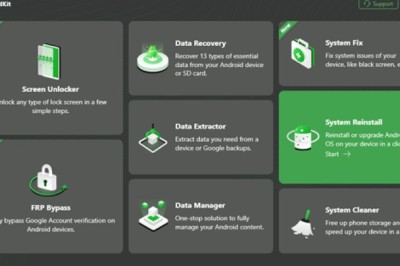views

With the shift to remote work models being a necessity rather than an option, it is more important now than ever before to ensure that employees are staying productive with their time at home. Time tracking and monitoring productivity as a team can be difficult when everyone is miles apart, but there are tools available to help ease the pressure of managing remote teams.
In this post, we’ll explore how businesses can use different strategies and technologies when it comes to making sure their employees remain productive in such unprecedented times.
Importance of Tracking Your Time in a Remote Working Environment
In a remote working environment, tracking your time holds significant importance for various reasons. Firstly, it promotes self-discipline and accountability, ensuring that you remain focused and committed to your tasks despite potential distractions at home. Secondly, time tracking can help you boost workplace productivity and identify areas for improvement, enabling you to optimize your work routine and achieve a better work-life balance.
Additionally, it facilitates transparent communication between team members and managers, fostering trust and providing valuable insights into project progress. Time tracking also helps in setting realistic expectations and deadlines, as it offers a clear understanding of the time required to complete specific tasks. In essence, tracking your time in a remote work setting is essential for maintaining productivity, enhancing collaboration, and promoting overall job satisfaction.
Benefits of Using a Time Tracking Tool for Remote Teams
Using a time-tracking tool for remote teams offers numerous benefits that contribute to the overall success and efficiency of the organization. One of the primary advantages is the increased visibility into individual and team performance, which allows managers to identify bottlenecks, monitor progress, and allocate resources effectively. Time tracking tools also encourage accountability among team members, fostering a sense of ownership and responsibility for their tasks and hours worked.
Moreover, these tools aid in setting realistic expectations and deadlines, as they provide insights into the actual time taken to complete specific tasks. This results in better project management and helps avoid overworking or underestimating the workload. Time tracking tools also facilitate accurate invoicing for clients, ensuring fair billing based on the hours dedicated to their projects.
In addition, time-tracking tools enable remote team members to maintain a healthy work-life balance by helping them identify areas where they may be spending excessive time or not taking adequate breaks. This awareness leads to improved time management and increased productivity. Furthermore, the data collected by time-tracking tools can be used to generate reports and analytics, offering valuable insights for informed decision-making and long-term organizational growth.
How to Determine the Most Efficient Way to Track Time
Determining the most efficient way to track time for a remote worker involves evaluating individual preferences, work habits, and the nature of the tasks performed. By considering these factors and exploring different time-tracking methods, remote workers can identify the approach that best suits their needs and enhances productivity. Here are some steps to help determine the most efficient way to track time as a remote worker:
1. Assess your work style: Reflect on your work habits and preferences. Are you more productive working in short bursts or long stretches? Do you prefer manual time tracking or automated tools? Understanding your work style will guide you toward the most suitable time-tracking method.
2. Identify your primary tasks: List the main tasks you perform daily and categorize them based on their complexity, urgency, and frequency. This will help you allocate appropriate time for each task and determine which time-tracking method aligns with your responsibilities.
3. Explore various time tracking techniques: Research different time tracking methods, such as manual logging, time blocking, the Pomodoro Technique, or using specialized software. Each method has its pros and cons, so weigh them against your individual needs and preferences.
4. Test and evaluate: Try out the shortlisted time-tracking methods for a week or two and evaluate their effectiveness. Keep track of how easy it is to use the method, its impact on your productivity, and whether it provides useful insights into your work patterns.
5. Choose the method that works best for you: Based on your evaluation, select the time tracking method that best suits your work style, enhances your productivity, and provides valuable insights into your time allocation.
6. Adjust and optimize: Continuously monitor the effectiveness of your chosen time-tracking method and make necessary adjustments to improve its efficiency. Regularly assess your work habits and make adjustments to optimize your time management.
Techniques For Staying Productive When Working Remotely
As remote work becomes increasingly necessary, it is crucial to ensure employee productivity and effective time management. Time-tracking tools can help manage remote teams by promoting self-discipline, accountability, and transparent communication.
These tools provide numerous benefits, such as increased visibility into team performance, better project management, accurate invoicing, and maintaining a healthy work-life balance. To determine the most efficient way to track time, remote workers should assess their work style, identify primary tasks, explore various techniques, test and evaluate methods, and choose the one that suits their needs best, while continuously adjusting and optimizing for improved efficiency.
























Comments
0 comment